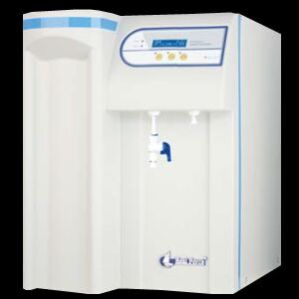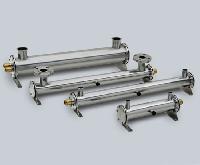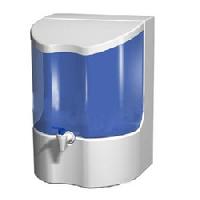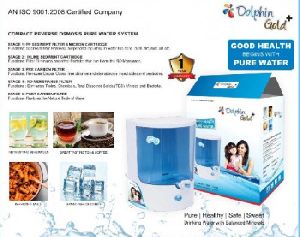Membrane Bioreactors
Get Price Quote
Two versions of the MBR process are offered by KANKYO, the KANKYO Submem and the KANKYO Crossmem. The KANKYO Crossmem is based on a cross-flow filtration process. The biomass is filtered in a filtration unit besides the bioreactor. The KANKYO Submem is based on filtration with submerged membranes that are submerged in the Membrane bioreactors for wastewater treatment is a combination of a suspended growth biological treatment method, usually activated sludge, with membrane filtration equipment, typically low-pressure microfiltration (MF) or ultrafiltration (UF) membranes. The membranes are used to perform the critical solid-liquid separation function.
In activated sludge facilities, this is traditionally accomplished using secondary and tertiary clarifiers along with tertiary filtration. The two general types of MBR systems are vacuum (or gravity-driven) and pressure-driven systems. Vacuum or gravity systems are immersed and normally employ hollow fiber or flat sheet membranes installed in either the bioreactors or a subsequent membrane tank. Pressure driven systems are in-pipe cartridge systems located externally to the bioreactor
An “MBR System” is considered to be a complete and integrated membrane unit (sub-systems) with related components necessary to allow the process to function as desired. An MBR, or Membrane Zone, can best be described as the initial step in a biological process where microbes are used to degrade pollutants that are then filtered by a series of submerged membranes (or membrane elements).
The individual membranes are housed in units known as modules, cassettes, or racks and a combined series of these modules are referred to as a working membrane unit. Air is introduced through integral diffusers to continually scour membrane surfaces during filtration, facilitate mixing and in some cases, to contribute oxygen to the biological process.
Advantages
Very stable process
The conventional biological system is sensitive to the wastewater composition. Due to variations in wastewater composition and/or presence of complex or toxic substances, high salt concentrations or low oxygen concentrations, the biomass floc formation is poor and the settling process will not perform well. This results in discharge of the micro-organisms and poor effluent quality. The membranes will however withhold all biomass and other suspended solids, ensuring a high effluent quality.
Very compact design
Due to the membrane separation the active micro-organism population in the bioreactor can be maintained at a concentration 4-5 times higher than in conventional systems. This results in bioreactor tank volumes of only 20-25% of the size of conventional systems. A clarifier, being a space-consuming tank, is not required.
High effluent quality
The ultra filtration membranes withhold all micro-organisms and most suspended solids, resulting in a clear and highly purified effluent. The effluent may be reused as low-grade process water or for irrigation purposes.
Low sludge production
The MBR can operate at a low F/M ratio, being the Feed of organic substance per amount of Micro-organisms per time unit. This results in a high mineralisation of sludge. In conventional systems 1 kg COD will result in about 0,3 -0,4 kg of biomass. With MBR systems 1 kg COD is converted to 0 - 0,2 kg biomass (zero biomass production can be obtained when operating at high temperatures). The discharge of biomass can have significant impact on the operational costs of the system.
Treatment wastewater up to 60 °C is possible
Treatment of wastewater with chlorine concentrations up to 120 g/l
Insentive to shock and vibration (on board of ships)
Field of Application:
Poorly degradable water (lightly sludge-sensitive)
In limited space
Stringent discharge regulations
Reuse







